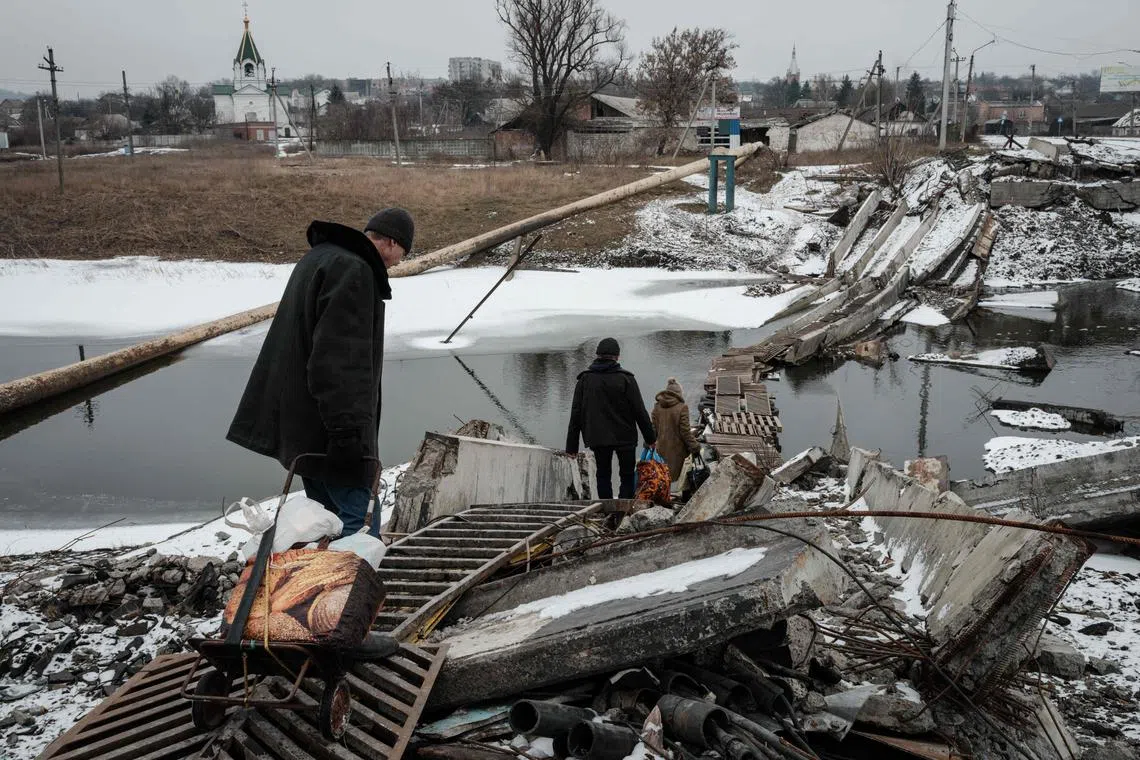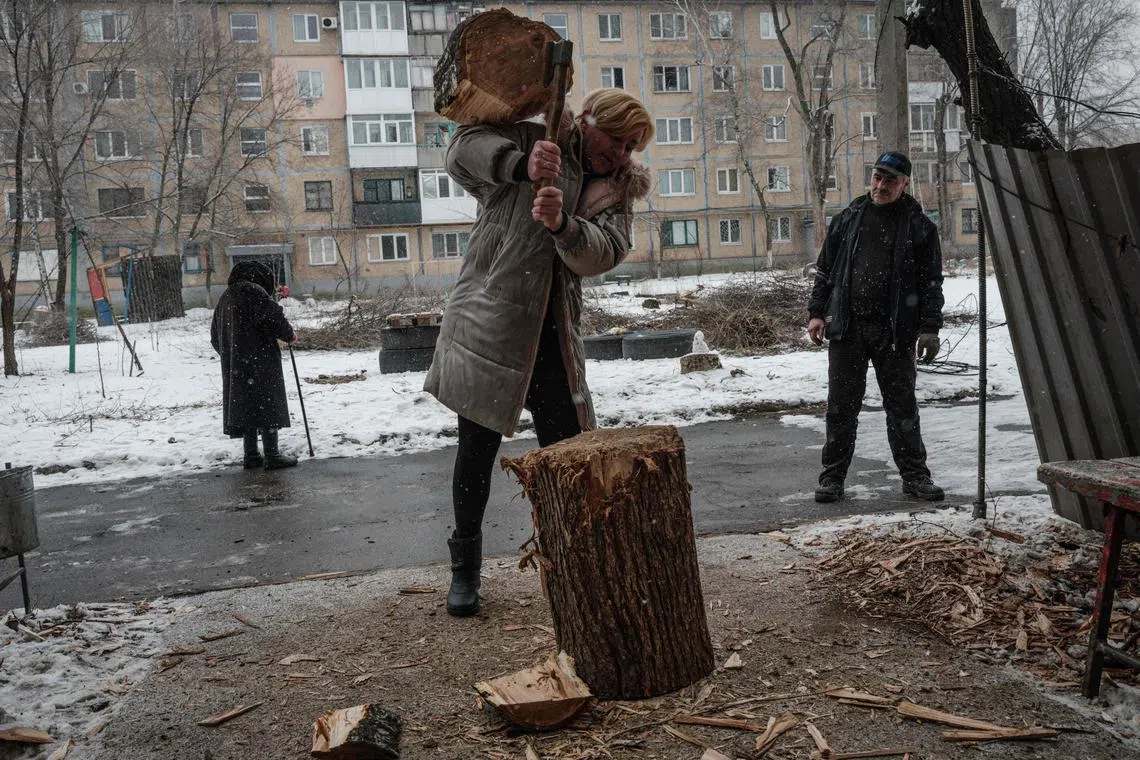Bakhmut's last residents brace themselves for Russian advance
Sign up now: Get ST's newsletters delivered to your inbox

People walk on a destroyed bridge to cross a canal towards the disputed area in Bakhmut.
PHOTO: AFP
Follow topic:
Bakhmut, Ukraine - As Moscow’s forces push to encircle the front-line hot spot of Bakhmut,
“How could I leave?“ said 75-year-old Natalia Shevchenko, who worries that moving would be too expensive.
She spends so long taking cover in her basement that she feels “like a mole” as she steps out into the light and her eyes adjust.
“Don’t worry,” she told AFP as shells whistled in the background. “They’re far away. I’ve now learnt where they’re going.”
Russian forces have been trying to seize control of Bakhmut in the eastern region of Donetsk for months in what has become the longest and bloodiest battle since Russia invaded Ukraine in February last year.
Despite the flow of Western weapons, Russia has in recent days claimed gains in the region.
The fight for Bakhmut has turned the town with a pre-war population of roughly 75,000 into a ghost town dotted with hedgehog anti-tank defences and burnt-out cars.
There is no gas, no electricity, no running water.
On Tuesday, a 12-year-old boy and a 70-year-old man were killed during Russia’s barrage of the town.
On a visit to Bakhmut on Wednesday, an Agence France-Presse team saw smoke coming from the northern part of Bakhmut.
A Ukrainian military vehicle was targeted by a Russian strike on Tuesday in the west of the town, and on Wednesday AFP saw bloodstained snow at the scene.
A piece of what appeared to be human flesh lay next to shattered glass.
Outside the war-ravaged town, Ukrainian soldiers have been busy fortifying positions.
The river that splits Bakhmut in two has become a key dividing line in the fighting.
Madam Shevchenko, who lives on the eastern bank, risks her life every day when she crosses the bridge to get water.
Those who could leave have left, while others like Madam Shevchenko seem resigned to their fate.
“Forget about gas, if we had electricity, everything would be easier. Then we could have heating and the chance to cook,” said the elderly woman.
“The worst thing is that we have no more signal,” she said. “I can’t call my family. I have two children – one is in Kyiv, the other is in Odesa. Their children are small, that’s why they had to leave.”

Local resident Olessya uses an axe to chop firewood in front of her apartment building in Bakhmut.
PHOTO: AFP
Madam Nadiya Burdinska, 66, said she has lived in Bakhmut her whole life and has no plans to leave.
“Only a fool wouldn’t be afraid. Everything is possible, if God wants it, I’ll stay alive,” she said outside her Soviet-era apartment building as she hauled sacks of wooden pallets.
To keep herself warm, she had to buy a stove for 3,500 hryvnia (S$125) and asked the authorities to provide the cheap wood.
“That’s how we live in the 21st century,” she said. AFP

